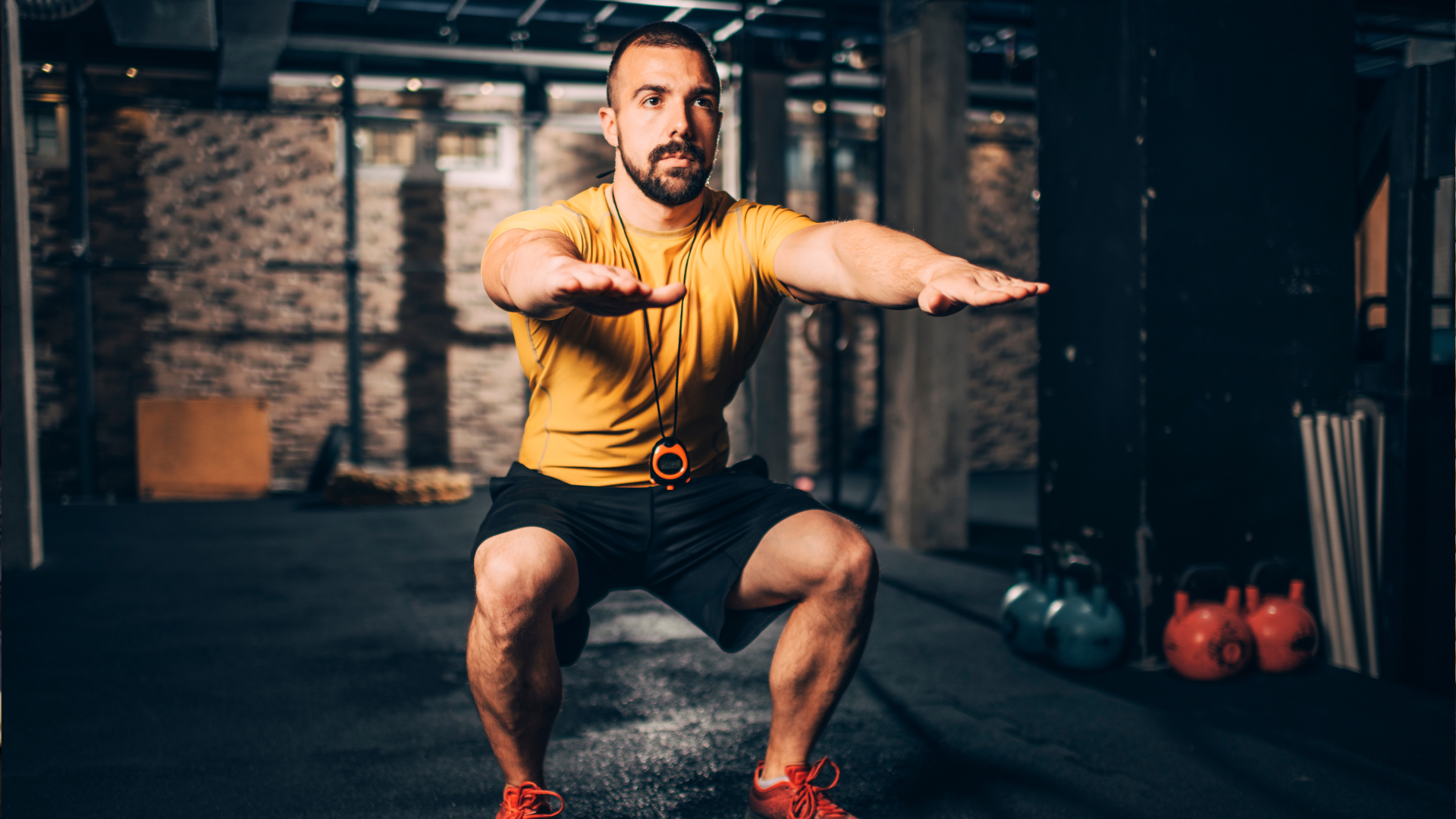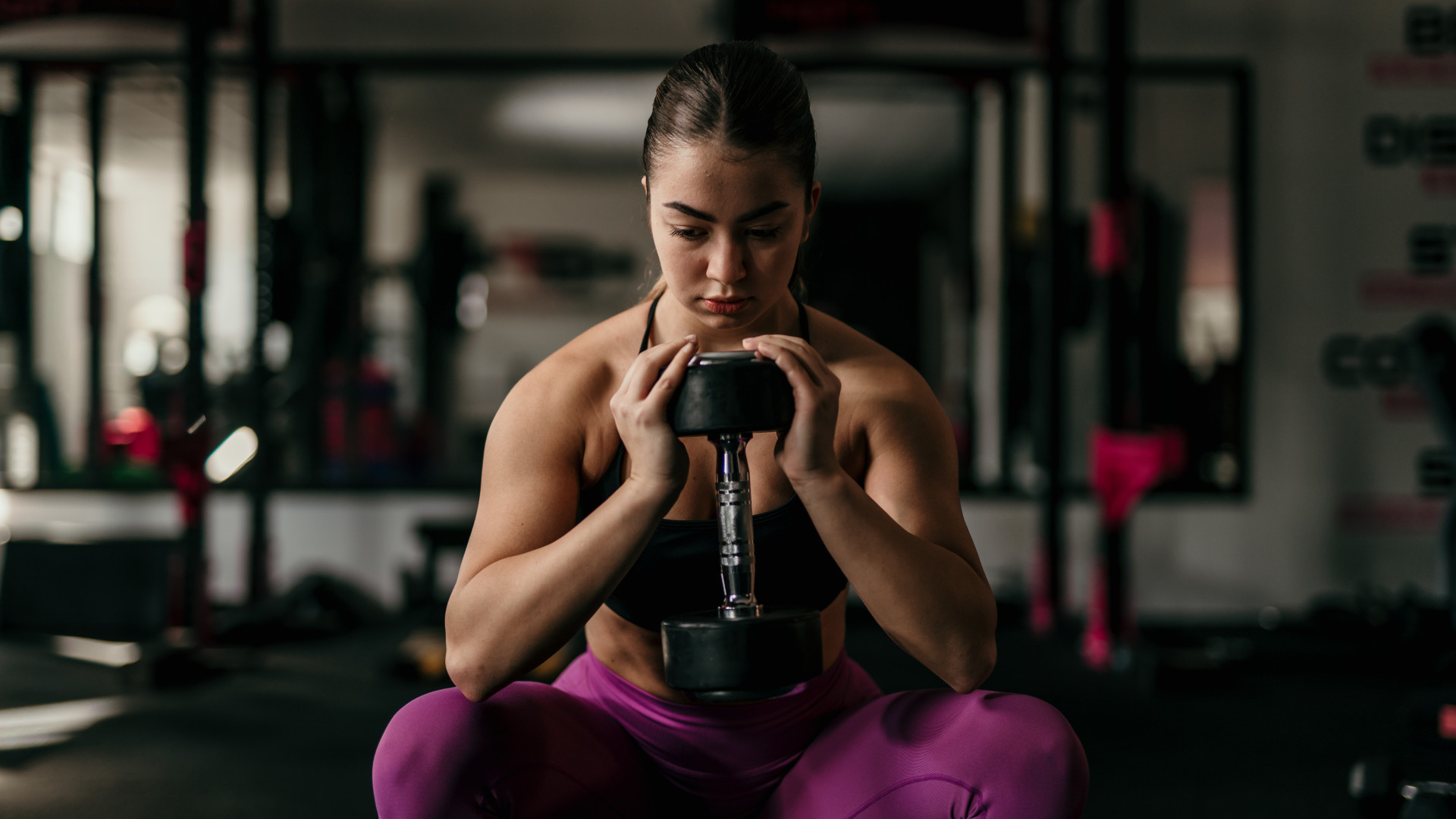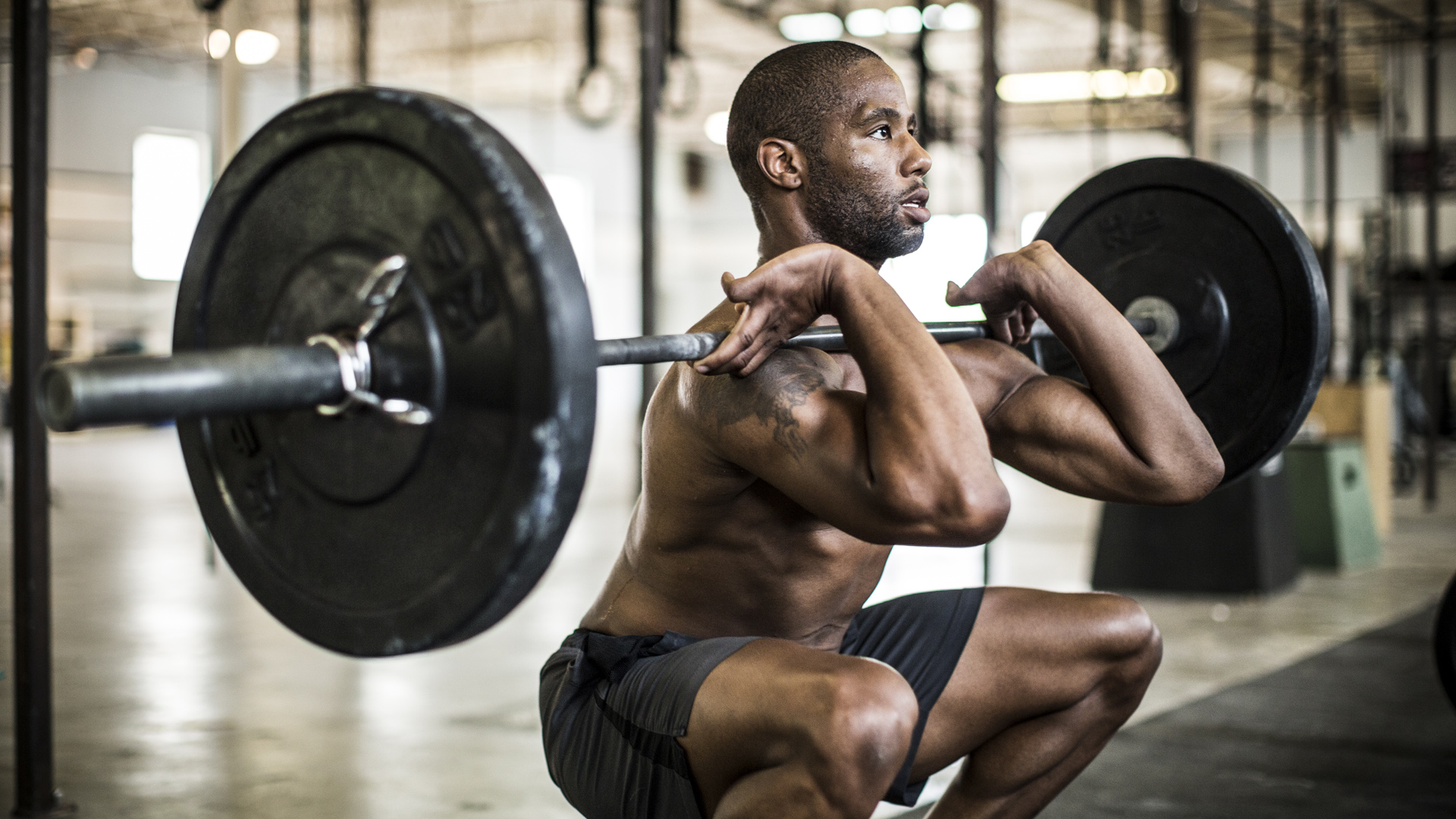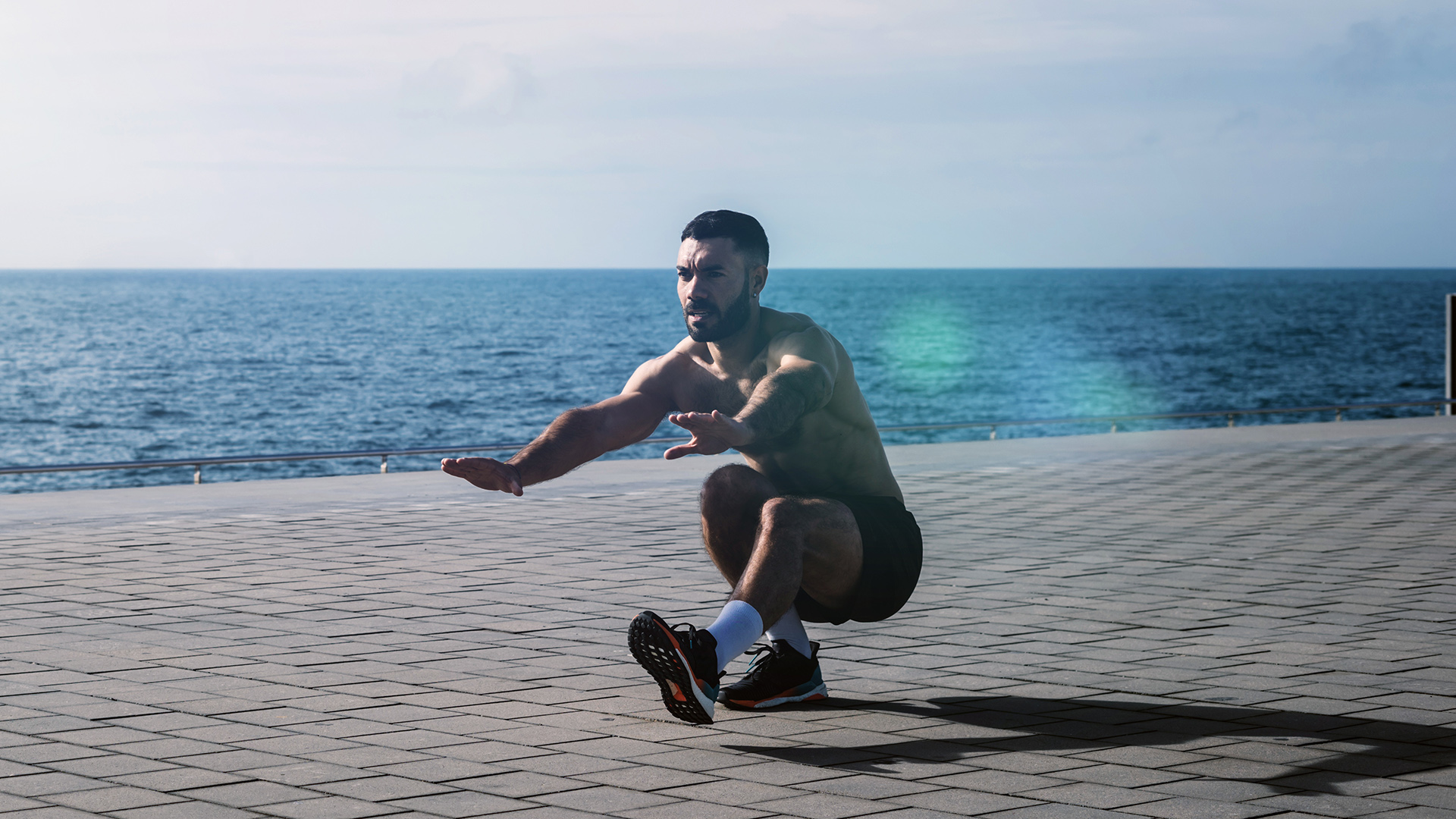
Are you doing your squats? That's good because this lower-body exercise is super important. Not only do they work multiple muscles, particularly the quadriceps, glutes, and hamstrings, but also your core and cardiovascular system. To put it bluntly, the mighty squats is a one-move full-body workout no one should ever skip.
Once you've mastered the basic bodyweight squat, it's time to transition into something a bit more challenging or different. There are many ways to squat! Here, we collected five squat variations you should try and explain their benefits. Because variety is the spice of life, after all…

1. Goblet Squats
The Goblet Squat is a great way to front-load your squat. It encourages you to stand up straighter while keeping the upper back upright with your chest puffed out. Holding a weight in front of you also encourages you to squat straight down between your legs and not over your knees, meaning you’ll be able to squat down that little deeper without putting too much pressure on your joints.
How to do a Goblet Squat
Stand with your legs slightly wider than your shoulders, holding a dumbbell or kettlebell at chest height.
Keeping your chest high and core switched on, push your hips back, bend your knees, and lower yourself into a squat until your thighs are parallel to the ground and your knees track over your feet. Pause for a second at the bottom of the move, and then drive back up through your heels, squeezing your glutes as you come up to standing.
T3 Top Tip: Keep the dumbbell or kettlebell close to your body. If it’s too far away, it will pull you forward, which isn’t the aim of the game; you need to be nice and upright, with your weight in your heels—not your toes.

2. Front squats
Much like goblet squats, front squats load up the front of the body, which takes any unwanted pressure off your lower back and places it instead onto your quads and upper back. The front squat will also help you brace your core and improve your mid-line stability with a full range of motion, meaning that, again, you should be able to squat down much lower than when performing the back squat.
How to do a front squat
Stand with your feet shoulder-width apart and hold a barbell across your upper chest.
Keeping your core fully braced and chest up high, push your hips back and bend your knees to lower your body until your thighs are parallel with the floor.
Drive your heels into the floor to push yourself explosively back up to the starting position.
T3 Top Tip: Lead with your elbows by keeping them high as you drive up from the bottom position of the squat. This will keep your upper back in a strong position and prevent your back from rounding forward.

3. Sumo Squat
Squatting with your feet wide and turned out is the perfect way to hit the inner thighs, also known as the adductor muscles, which are easily missed in a lower body workout. The sumo stance will also allow you to lift heavier due to the reduced range of motion while working your glutes and hamstrings harder.
How to do a sumo squat
Start by positioning your feet in a wide stance, so your feet are wider than shoulder-width apart and your feet are externally rotated and pointing outwards.
Lower into your squat by pushing your hips back and bending at the knee. Lower down so that your thighs are parallel or just below the floor.
Reverse the movement by pushing through both of your feet as you come back up to standing.
T3 Top Tip: As you stand up, squeeze your glutes but avoid pushing your hips forward; this can place unnecessary pressure on the lower back.

4. Squat Jumps
Here’s one to get your heart rate up; squat jumps! Also known as plyometric squats, squat jumps are great for anyone looking to build explosive power and improve their speed and athletic performance. As well as working the entire lower body, they are a surefire way to improve your cardio fitness too.
How to do a squat jump
Stand tall with your core engaged and your chest lifted.
Keeping your back straight, squat down until your thighs are parallel with the floor, then jump up explosively as high as you can. As you land, bend your knees and lower back into your squat position so you’re ready to explode back into another jump.
T3 Top Tip: Be sure to bend your knees as you land. This will help you land safely without jarring your knees and prepare for your next rep.

5. Pistol Squats
Brace yourself (and your core), the pistol squat is a challenging squat alternative that will improve your balance and controlled mobility through your hips, knees and ankles. It will also work your abs and entire lower body with particular emphasis on your quads and glutes.
How to do a pistol squat
Start with your feet together and lift one leg off the floor so it’s slightly off the floor and in front of you. Bend your standing knee to squat down as low as you can while keeping your back straight. Push back up to the start position through your heel, then switch legs and repeat.
T3 Top Tip: Not quite there yet? Hold on to a TRX to guide you through the move until you feel confident with doing it with just one hand on the TRX - and then none!







